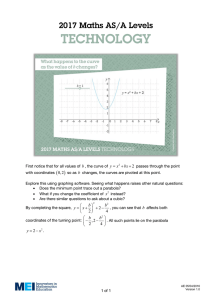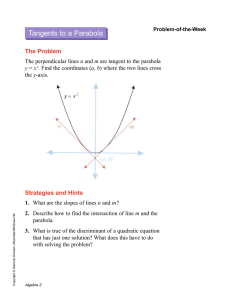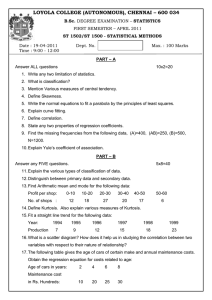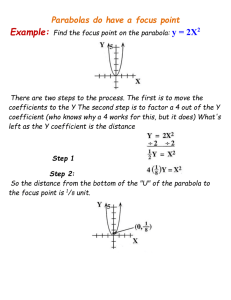Clay Bennett Assignment 2.9
advertisement
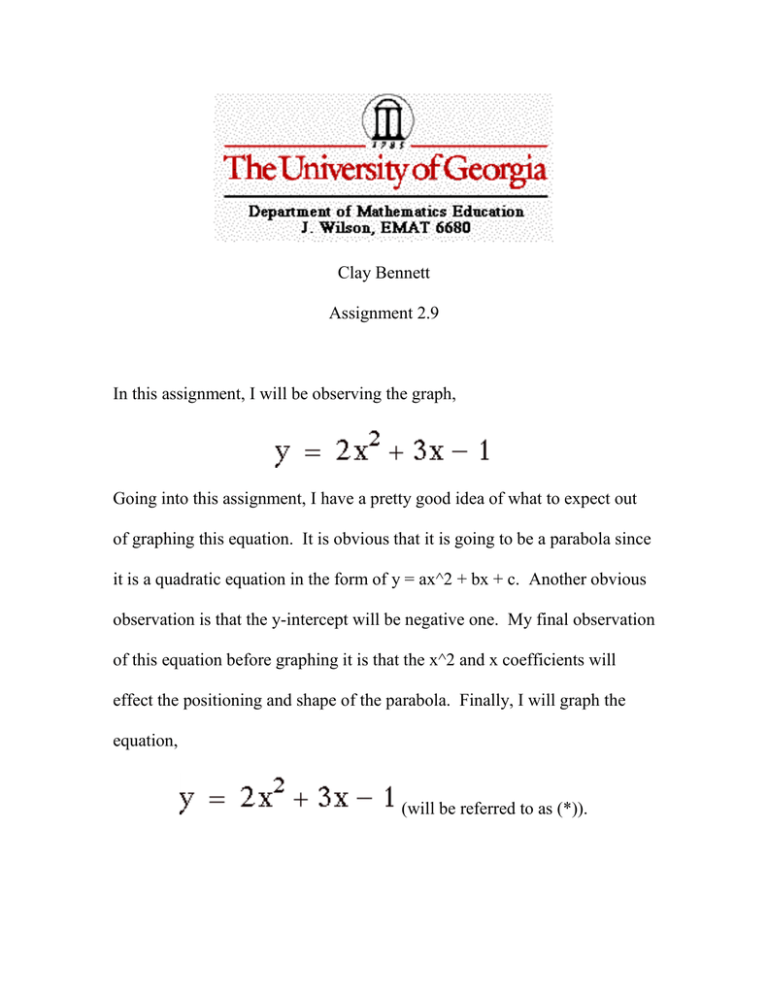
Clay Bennett Assignment 2.9 In this assignment, I will be observing the graph, Going into this assignment, I have a pretty good idea of what to expect out of graphing this equation. It is obvious that it is going to be a parabola since it is a quadratic equation in the form of y = ax^2 + bx + c. Another obvious observation is that the y-intercept will be negative one. My final observation of this equation before graphing it is that the x^2 and x coefficients will effect the positioning and shape of the parabola. Finally, I will graph the equation, (will be referred to as (*)). After observing the graph, my predictions about the graph are correct. Next, I will graph the same equation except I will add (x*y) to it. The equation will look like this: (will be referred to as (**)). I am unable to tell too much about the size and shape of graphing this equation while in this form, so I will simplify the equation. After simplifying the equation, I can only make one prediction and that is that the graph will have a vertical asymptote of one. I will graph now graph (**) on the same axes graph as (*). By looking at the graph of (**), I can tell my earlier prediction of the graph having a vertical asymptote of one is correct. It does not form a symmetrical parabola due to the vertical asymptote. One thing that is peculiar is that the graph is not showing the x values for when x is greater than one. Now I will modify the range on the y-axis to (-25) to 25. After changing the range on the y-axis, I can now see the other curve that shows the part of the graph that I was missing. The next question in the assignment asks what do I think will happen when the coefficients of the xy term change. I know when the coefficient is zero that it will be the same as the graph of (*). I would guess that as the coefficient got larger that the curves would converge and as it got smaller they would become further apart. Here is a movie that will show us what happens. It will go from the coefficient being –25 up to 25. QuickTime™ and a Animation decompressor are needed to see this picture. As you can see from the movie, when the coefficient gets large rotates the curves 90 degrees clockwise and the curves begin to converge at the origin and span the first and third quadrants. When the efficient gets smaller, it widens the curves at first then spans the second and four quadrants and converges at the origin. Finally we will see what happens when the coefficient between 0 and 1. Here is a movie to see what happens… QuickTime™ and a Animation decompressor are needed to see this picture. From our movie I can see as the coefficient approaches zero that the curve on the left tilts until it become the parabola that is graphed in (*).
